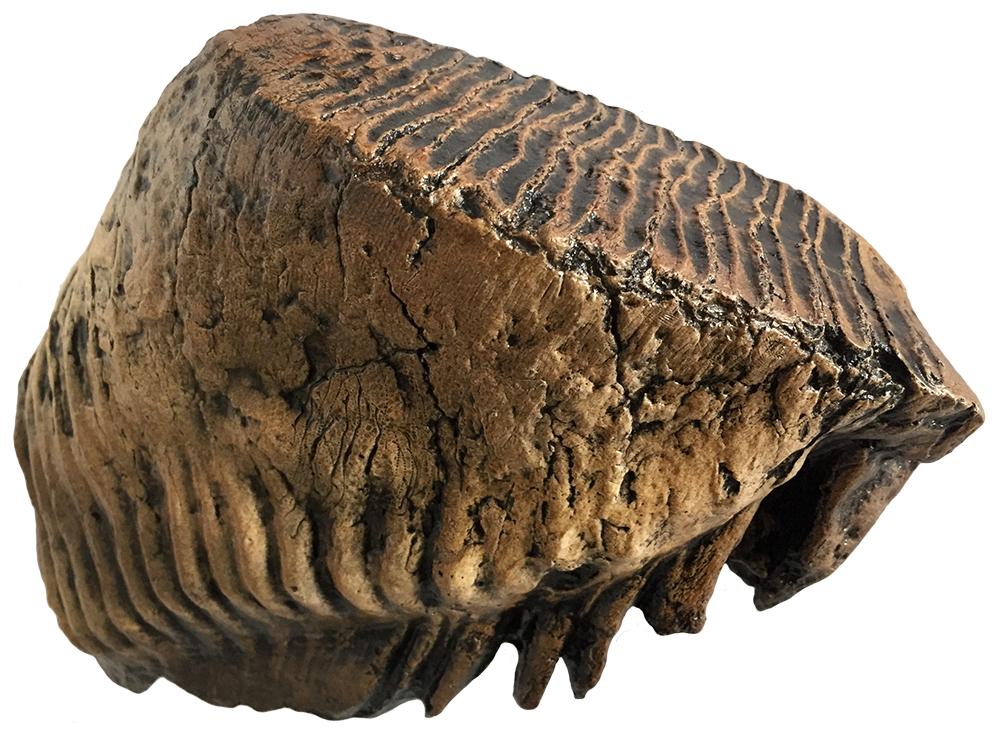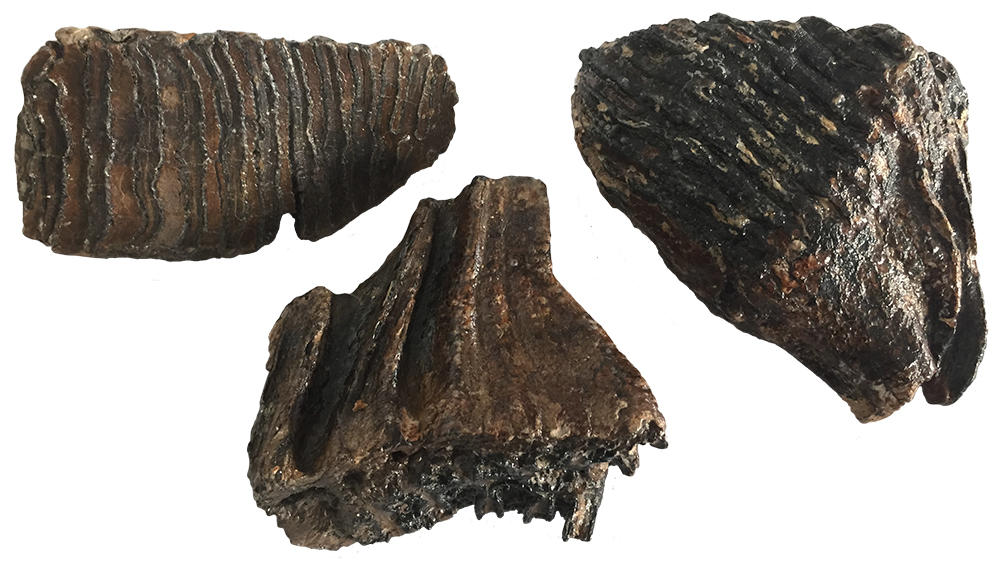
Mammoths were one of the more successful genera (Mammuthus) of the very successful proboscidean lines. The first elephant ancestors arose in Africa nearly 56 million years ago as one of the many mammal radiations that followed in the wake of the End Cretaceous extinction. When Africa connected with Eurasia some 20 million years ago, different proboscidean lines quickly spread across Eurasia and by 16 million years ago arrived in North America. When the Isthmus of Panama formed, their descendants made it to South America as well. This spread occurred in multiple pulses, the most recent of which was the elephant family (mammoths and modern elephants).
As a genus, mammoths arose roughly five million years ago and are more closely related to modern Asian elephants than African elephants (the latter split off nearly a half million years earlier). Mammoths were part of the most recent proboscidean radiation, originating in Africa and spreading into the Americas by at least 600,000 years ago. However, their ranges and numbers dramatically declined as humans moved out of Africa to spread across the world. Their images are captured in cave art and their bones found in multiple archaeological sites. The last mammoths lived on Wrangel Island in the Arctic until 3,700 years ago, when the Great Pyramid of Egypt was already 900 years old.
Mammoth molars have ridged flat tops, much like modern elephant molars, and are well suited to grazing and cutting up abrasive, silica-rich grasses. In contrast, the teeth of their mastodon cousins had high rounded cusps better suited to crushing woodland and swamp vegetation.
Mammoths and their kin are some of the few polyphyodont mammals, animals that replace their teeth throughout their lives. Unlike dinosaurs and many ‘reptile’ lines, these mammals have a limited number of teeth but use their molars in sequence with worn molars replaced by new ones. Even more oddly, new molars erupt at the back of the jaw and then move towards the front of the jaw as they are worn away, so the teeth do not simply erupt vertically in a set spot. Sequential molar replacement is the reason why modern elephants can live to be up to 70 years old instead of wearing their teeth out more quickly and dying at a younger age. In addition to the cast of an adult mammoth tooth, the cabinet has fragments of fossil teeth from juvenile mammoths that are much smaller.
Together, mammoths and their distant cousins, the mastodons, were the first definitive proof that evolution had occurred. Although the concept of extinction was proposed earlier on the basis of marine fossils, the world’s oceans were so poorly known it was possible ammonites and mosasaurs still lived in some remote sea. However, in 1800 George Cuvier published his work on mammoths and mastodons showing that they were distinct from living elephants. Since the land was well enough explored to dismiss the possibility of living mammoths and mastodons, extinction was finally accepted.
